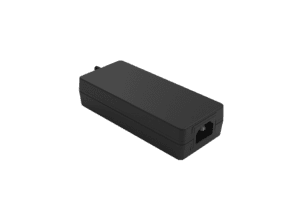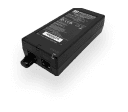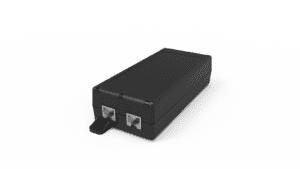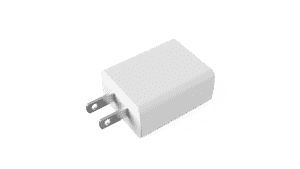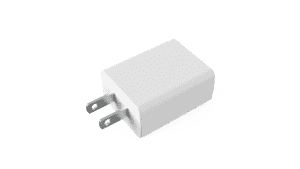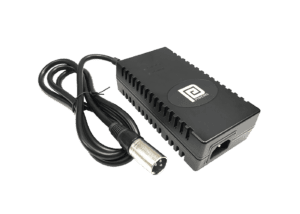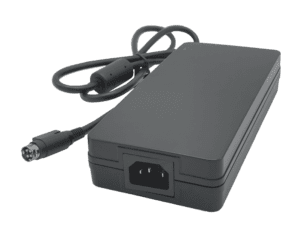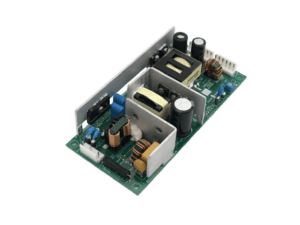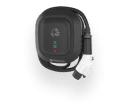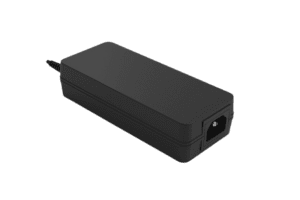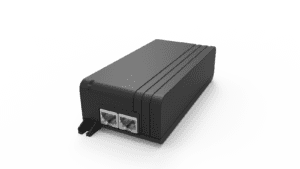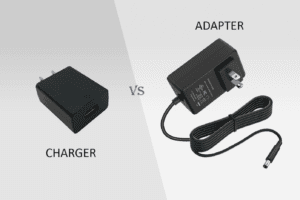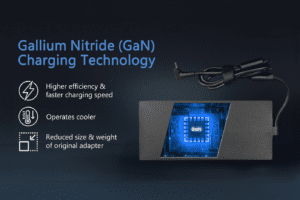BLOG
Best Guide to IP67 Robot Charging Stations: How to Build Weatherproof Power Docks for Outdoor and Mobile Robots
Table of contents

As mobile robots expand into outdoor logistics, last-mile delivery, agriculture, and perimeter security, the demand for rugged, weatherproof charging stations has never been higher. These bots operate day and night, through storms, dust, and fluctuating temperatures—so their charging infrastructure must be just as resilient. The solution? IP67-rated robot charging stations, engineered to deliver safe, efficient power in challenging environments.
IP67-rated systems provide full protection against dust and temporary water immersion, making them ideal for sidewalks, warehouses, parking structures, farms, and more. But building a charging dock that truly meets the IP67 standard requires more than a sealed box—it demands an integrated approach combining mechanical design, thermal engineering, and smart power electronics.
This guide walks engineers, OEMs, and systems integrators through the critical steps in designing and deploying IP67-compliant robot charging stations—from spec sheets to real-world field success.
Why IP67 Certification Is Essential for Outdoor and Mobile Robot Charging
Ingress Protection (IP) ratings are a globally recognized standard under IEC 60529, used to measure protection against solid objects and liquid ingress. IP67 is particularly useful for outdoor applications.
Top Features
- Full dust-tight sealing (6)
- Water resistance up to 1 meter immersion for 30 minutes (7)
- Weatherproof gaskets, sealed ports, and corrosion-resistant housings
- Wide-temperature-rated components inside
Top Benefits
- Enables 24/7 outdoor robot operations in rain, snow, or dusty conditions
- Minimizes maintenance caused by corrosion or electrical shorts
- Reduces field service costs and emergency downtime
- Ensures compliance with public safety and industry standards
Best Practices
- Verify IP67 compliance through certified third-party lab testing
- Use dual-layer sealing (gasket + membrane) for vulnerable openings
- Account for temperature, UV, and chemical exposure when selecting materials
- Avoid over-designing; IP67 is often sufficient unless permanent submersion is expected
IP67 is the gold standard for rugged outdoor systems—not just for enclosures, but for the entire charging assembly.
Core Components of a Weatherproof Robot Charging Dock
A true IP67-rated robot dock requires all critical components to meet ingress protection levels—not just the outer shell.
Top Features
- Waterproof DC output connectors and strain-relief cable glands
- IP-rated enclosure (metal or polymer) with anti-UV coatings
- Internal PCB with conformal coating or potting
- Wide input voltage AC-DC or DC-DC converters
Top Benefits
- Maintains power delivery despite wind, rain, or debris
- Prevents corrosion, arcing, or short circuits
- Supports robots across delivery, cleaning, security, and farming sectors
- Extends the operational life of autonomous robot fleets
Best Practices
- Use IP-rated circular or magnetic connectors with sealing caps
- Position charging contacts where water drainage is natural
- Mount enclosures off the ground to reduce splash or flood risk
- Validate the full system’s IP67 performance—not just individual parts
IP67 isn’t achieved with one part—it’s earned across the system architecture.
Thermal and Environmental Engineering for IP67 Stations
Sealing a dock from water and dust creates thermal challenges. Without airflow, internal components must be efficient and heat-tolerant.
Top Features
- Passive or active thermal dissipation systems
- ePTFE vent membranes for pressure equalization
- Thermal sensors and auto-throttle logic in firmware
- Heater circuits for sub-zero environments
Top Benefits
- Prevents overheating of internal power modules
- Supports cold-weather charging without risking battery damage
- Maintains IP67 protection without trapping condensation
- Reduces performance throttling in extreme conditions
Best Practices
- Simulate ambient temperatures from -20 °C to +50 °C or more
- Use wide-temperature-rated capacitors, ICs, and power modules
- Integrate surge protection for lightning or unstable grid supply
- Log environmental conditions and faults for future diagnostics
The dock must operate like a mini data center—sealed and thermally managed.
Power System Design and Battery Communication
Safe and intelligent power delivery is essential in any robot charging system—especially in outdoor deployments.
Top Features
- Smart AC-DC power modules with overcurrent/overvoltage protection
- CANBus or UART-based communication with the robot’s battery management system (BMS)
- Auto-shutoff when charging is complete
- Redundant fault monitoring (voltage, current, temperature)
Top Benefits
- Protects robots from battery failure, fire risk, or incomplete charging
- Enables real-time diagnostics and fault alerts
- Supports multiple robot brands or models with configurable settings
- Increases efficiency and reliability across large-scale deployments
Best Practices
- Use BMS handshaking to verify safe connection before current delivery
- Log charge cycles, duration, and fault codes in local or cloud storage
- Select power modules tested for high humidity and vibration
- Validate plug-in behavior across different robot types and battery chemistries
Smart charging is no longer optional—it’s a core requirement for any modern robot infrastructure.
CLIENT'S QUOTE
"Phihong’s PoE solutions have made a huge difference for us! Our network runs more efficiently, and we’ve seen real cost savings. We couldn’t be happier!"
Mechanical Housing and Installation for Outdoor Environments
The physical build must survive daily wear and tear from people, machines, and nature. Material choice and installation layout matter just as much as electrical specs.
Top Features
- Polycarbonate or powder-coated aluminum enclosure
- Tamper-resistant fasteners and RFID/service access panels
- Water drainage paths and overhangs to redirect rain
- UV-, oil-, and salt-resistant surfaces
Top Benefits
- Withstands urban, agricultural, and industrial abuse
- Reduces replacement cycles from physical or weather damage
- Enables public deployment without safety hazards
- Allows service teams to perform safe, clean maintenance in the field
Best Practices
- Anchor docks to concrete or stable surfaces
- Avoid placing near vehicle traffic, irrigation heads, or low-clearance spots
- Include signage or LED indicators for public awareness and robot alignment
- Test mechanical seal integrity seasonally for early detection of wear
Build for the world—not just the warehouse.
Smart System Features for IP67 Outdoor Docking Infrastructure
The final layer in modern IP67 station design is intelligence and automation. Data, diagnostics, and fleet management transform a rugged station into a networked asset.
Top Features
- Cloud or edge-based dashboards showing real-time charger health
- OTA firmware updates for chargers and communication modules
- Status LEDs, QR codes, or app-based diagnostics for technicians
- Remote restart, shutdown, and usage analytics
Top Benefits
- Lowers maintenance costs with predictive service alerts
- Maximizes uptime through proactive troubleshooting
- Improves energy planning with usage logs and fleet load balancing
- Enables robot deployment at scale with little local infrastructure
Best Practices
- Use secure communication protocols (TLS, encrypted MQTT, or VPN)
- Separate control logic and power modules to isolate faults
- Design chargers to fail gracefully and safely in communication loss scenarios
- Provide open APIs or webhooks for third-party system integration
Today’s charging stations must be rugged outside—and smart inside.
How Phihong USA Helps You Build IP67 Robot Charging Solutions
Phihong USA specializes in weatherproof power supplies, sealed connectors, and smart charging modules designed for outdoor robotics. Our products are engineered to meet IP67 compliance, wide temperature operation, and long-term reliability across autonomous fleets.
From delivery bots to campus security patrols, we support OEMs with:
- Ruggedized AC-DC and DC-DC modules
- IP-rated connectors and thermal accessories
- Firmware handshakes with robot BMS
- Documentation support for IEC/IP/UL certification
Need help building a field-ready robot dock? Phihong USA can assist from prototype to production. Let’s build power systems that match the reliability of your robots.

Contact Our Team Today!
Our dedicated sales team and international partners are prepared to support you with your latest projects and initiatives globally.
Explore More with Phihong USA
As we conclude our exploration of PoE technology, it’s evident how these innovations are streamlining power and data integration across various industries. Phihong USA stands at the forefront of this technological advancement, offering a diverse range of power solutions designed to meet the evolving needs of modern industries.
Phihong USA’s extensive product lineup includes:
- Power over Ethernet (PoE) Solutions: Delivering reliable power and data transmission over a single cable, ideal for simplifying network installations and reducing costs.
- AC/DC Adapters and Power Supplies: From compact adapters to industrial-grade power supplies, Phihong provides solutions that ensure efficiency and reliability in various applications.
- Battery Chargers: Customizable chargers for lithium-ion and lead-acid batteries, supporting a wide range of power requirements for mobility and industrial applications.
- Medical Power Supplies: Specialized power solutions designed to meet the stringent requirements of the healthcare industry, ensuring safety and reliability.
Phihong USA is committed to innovation and excellence, continually developing products that meet the highest standards of performance and reliability. Their global reach and dedication to customer support make them a trusted partner in powering the future.
Here are some useful links to explore Phihong USA’s offerings further and bring in new potential clients:
Visit Phihong USA to discover how their advanced power solutions can support your business needs. Whether you’re looking to upgrade your network, or find reliable power supplies, Phihong USA has you covered.
By choosing Phihong USA, you’re partnering with a leader in power technology, ensuring your operations run smoothly and efficiently with top-tier power solutions. Contact Us today!
FAQ
What is an IP67 robot charging station?
An IP67 robot charging station is a weatherproof, dust-tight, and water-resistant charging dock designed to support outdoor or industrial robots. The IP67 rating ensures protection against complete dust ingress (6) and temporary immersion in water up to 1 meter for 30 minutes (7). These docks include sealed enclosures, waterproof connectors, and conformally coated internal electronics. They’re ideal for robots operating in rain, snow, dust, and other harsh environments, such as delivery, surveillance, cleaning, and agricultural bots.
What makes IP67 different from IP68 in charging systems?
Both IP67 and IP68 provide excellent water and dust protection, but IP68 is for longer or deeper immersion. While IP67 protects against rain or splashes, IP68 is designed for submersion beyond 1 meter, depending on manufacturer specifications. IP68 is typically used for underwater or flood-prone applications. However, IP67 is more common and sufficient for most outdoor robot charging needs. It’s a balance between robust protection and design flexibility, whereas IP68 often requires fully sealed, pressure-resistant enclosures and stricter thermal controls.
What components need to be IP67-rated in a robot charger?
Key components that must meet IP67 standards include:
- Enclosure housing (sealed, UV-resistant)
- DC output connectors (with gaskets or sealing caps)
- Cable entry points (with compression glands)
- PCB and power modules (with conformal coating or potting)
- Vents or membranes (that allow airflow but block water)
If any one part fails to meet IP67, the entire system is at risk of water ingress or short circuit. For this reason, engineers must design holistically, not just select an IP-rated box.
How do I test if a charging station meets IP67?
IP67 compliance is tested using dust chambers and immersion tanks, as per IEC 60529. Dust testing verifies no ingress under vacuum, and water testing involves submersion at 1 meter for 30 minutes. Engineers must ensure no internal moisture or functional degradation occurs after testing. Certification should be conducted by an accredited third-party lab, and test documentation should include performance data. Some OEMs also conduct field simulations, such as power-washing or humidity cycling, to ensure real-world durability.
Can Phihong USA help design and certify IP67 charging stations?
Yes. Phihong USA offers a full portfolio of IP67-rated power components, including sealed power supplies, outdoor connectors, surge protection, and thermal solutions. We support OEMs with engineering design, BOM validation, environmental simulations, and compliance documentation for IP67 and related safety certifications. Our power modules are widely used in robotics, EV charging, industrial automation, and smart city infrastructure. Whether you’re building from scratch or upgrading an existing system, Phihong can help ensure your charging station is truly weatherproof and field-ready.

